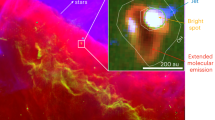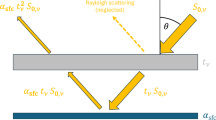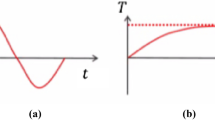Abstract
IN 1912–13, F. E. Fowle1 made studies of the absorption of infra-red radiation by water-vapour at 0.93μ, 1.13μ and 1.47μ, in order to determine spectroscopically the total water-vapour content of the atmosphere. The first two wave-lengths are at the centres of the ρ and ϕ bands; the last is about 450 cm.−1 from the Ψ-band centre.
This is a preview of subscription content, access via your institution
Access options
Subscribe to this journal
Receive 51 print issues and online access
$199.00 per year
only $3.90 per issue
Buy this article
- Purchase on SpringerLink
- Instant access to full article PDF
Prices may be subject to local taxes which are calculated during checkout
Similar content being viewed by others
References
Fowle, F. E., Astrophys. J., 35, 149 (1912); 37, 359 (1913).
Mecke, R., Z. Phys., 81, 313 (1933).
Nielsen, H. H., Phys. Rev., 59, 565 (1941); 62, 422 (1942).
Randall, H. M., Dennison, D. M., Ginsburg, N., and Weber, L. R., Phys. Rev., 52, 160 (1937).
Abbott, C. G., and Freeman, H. B., Smithson. Misc. Coll., 82, No. 1 (1929).
Langley, S. P., Ann. Astrophys. Obs., 1, table 23 (1900).
Author information
Authors and Affiliations
Rights and permissions
About this article
Cite this article
COWLING, T. Hitherto Unidentified Absorption Bands of Water Vapour. Nature 152, 694 (1943). https://doi.org/10.1038/152694a0
Issue date:
DOI: https://doi.org/10.1038/152694a0



